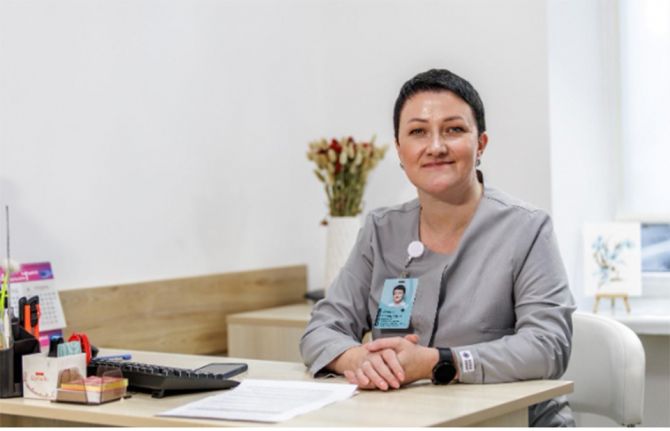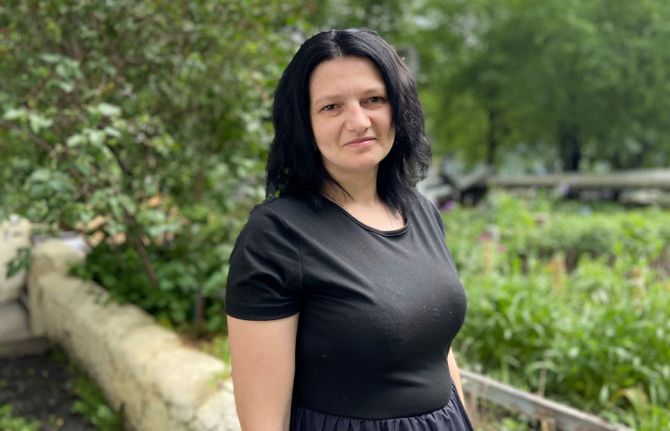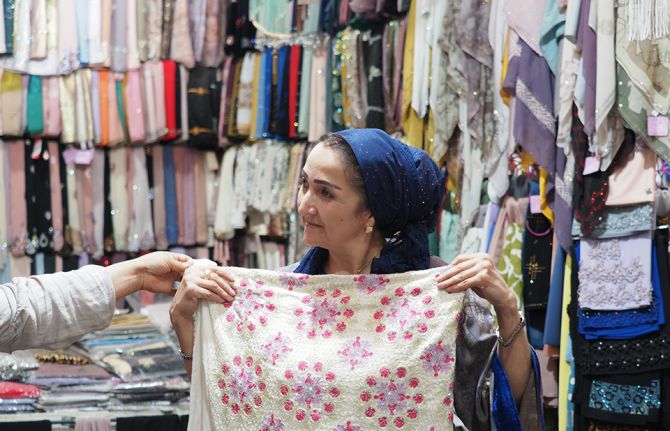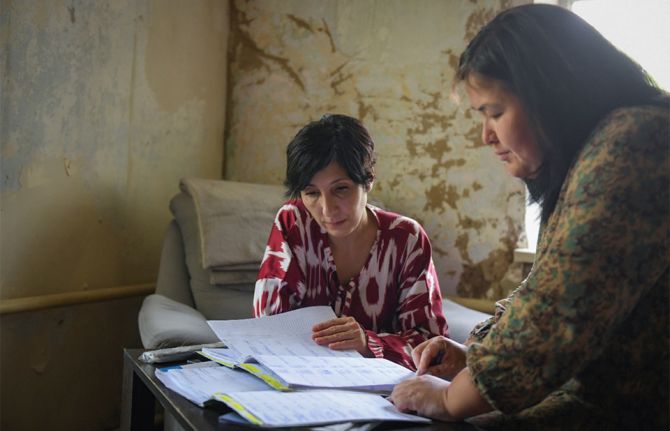

Feature Story
Displacement and HIV: doubly vulnerable in Ukraine
11 August 2025
11 August 2025 11 August 2025This story first appeared in the UNAIDS Global AIDS Update 2025 report.
In early 2022, shortly after the full-scale invasion of eastern Ukraine, Kateryna was pregnant and caring for her young son and daughter.
“We lived under constant shelling in Pokrovsk. For the sake of my children, I had to flee to give birth,” she says. She is originally from the Donetsk region in Ukraine, which by 2024 became the scene of intense fighting.
Today, her hometown of Pokrovsk lies in ruins. With three children and no home to return to, Kateryna is trying to rebuild her life from scratch.
Kateryna has found refuge in the city of Dnipro at a shelter run by the non-governmental organization 100% Life was established by UNAIDS with donor support. The shelter provides a safe environment for women living with HIV, including those with children. It is one of four such shelters in the Dnipropetrovsk region, offering vital humanitarian assistance and connections to HIV care for people who have lost everything.
Since the beginning of the war, nearly 3.7 million people have been displaced within Ukraine. As the violence has escalated and people are forced to flee repeatedly, many people are living in areas of active fighting or under occupation. In this context, any reliable assessment of the rate of HIV among displaced people is impossible.
Despite this, the health system in Ukraine, supported by humanitarian organizations and international donors, has made extraordinary efforts to ensure continued access to HIV treatment. From the first days of the invasion, the Public Health Center quickly distributed antiretroviral medicines to central and western regions, where most internally displaced people fled. Emergency stocks were concentrated in leading health facilities and, with the help of nongovernmental organizations, volunteers and partners, supply chains were rapidly restored.
“In the early days of the war, hospitals in Lviv were overcrowded,” says Olenka Pavlyshyn, an infectious diseases specialist at the Center for Integrated Medical and Social Services. “But even then, there were no interruptions in antiretroviral therapy.” People received three- or six-month supplies of medicines, and treatment was provided based on medical need rather than documents or place of residence.
The response also reached people who fled abroad. A total of 6.4 million Ukrainians have left the country, and many face barriers to health care in host countries. “In some European countries, our citizens still cannot get health insurance, so they have no access to medical care,” says Olenka. “Others are not ready to disclose their HIV status in a new environment, so these people come back to Ukraine every six months—and we give them the medicines they need for continued treatment while living abroad.”
As the health system in Ukraine adapts to the demands of a displaced population inside the country and beyond its borders, pressure is growing.
Ukraine was once a regional leader in transitioning from donor to domestic funding for health services, but its HIV resources are extremely constrained due to the war. The country now relies heavily on international assistance to sustain essential medical care, including HIV services. Although antiretroviral therapy has been secured, HIV services may be at risk due to cuts in United States funding.
New HIV infections and AIDS-related deaths could rebound globally if the funding cuts are not recovered. Continued international support is critical to sustain the HIV response and ensure countless people caught in a war, like Kateryna, are not left behind.



